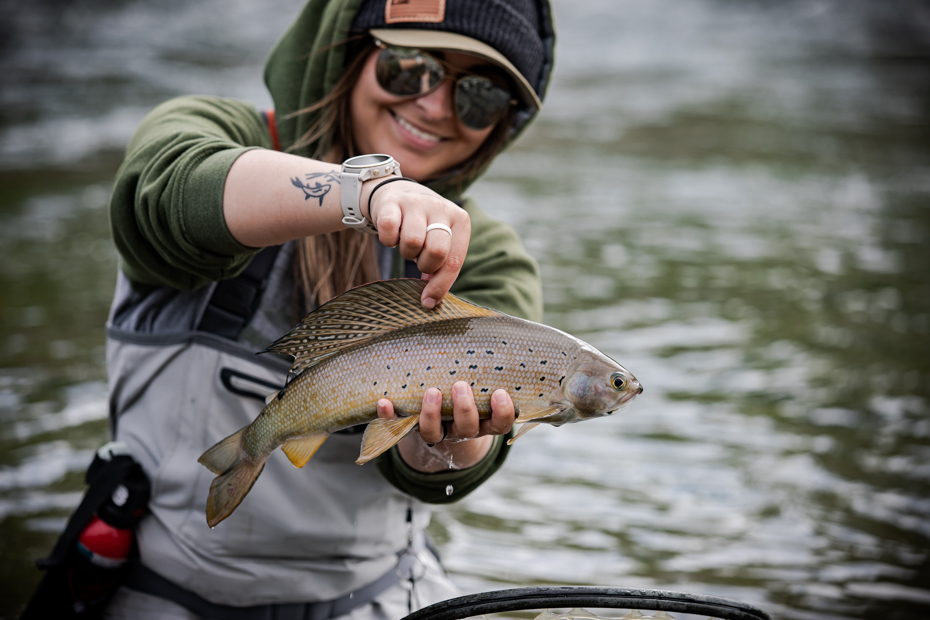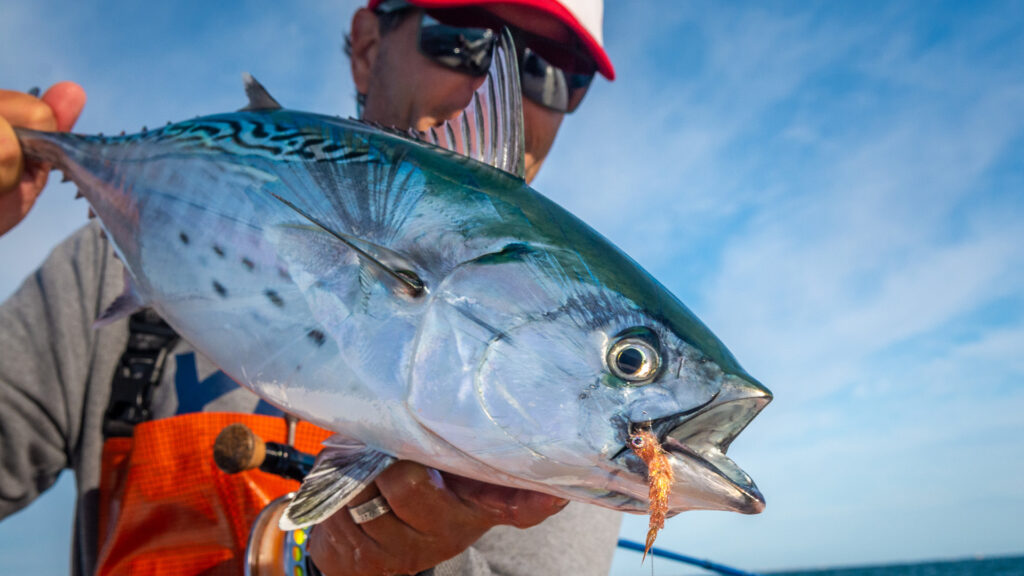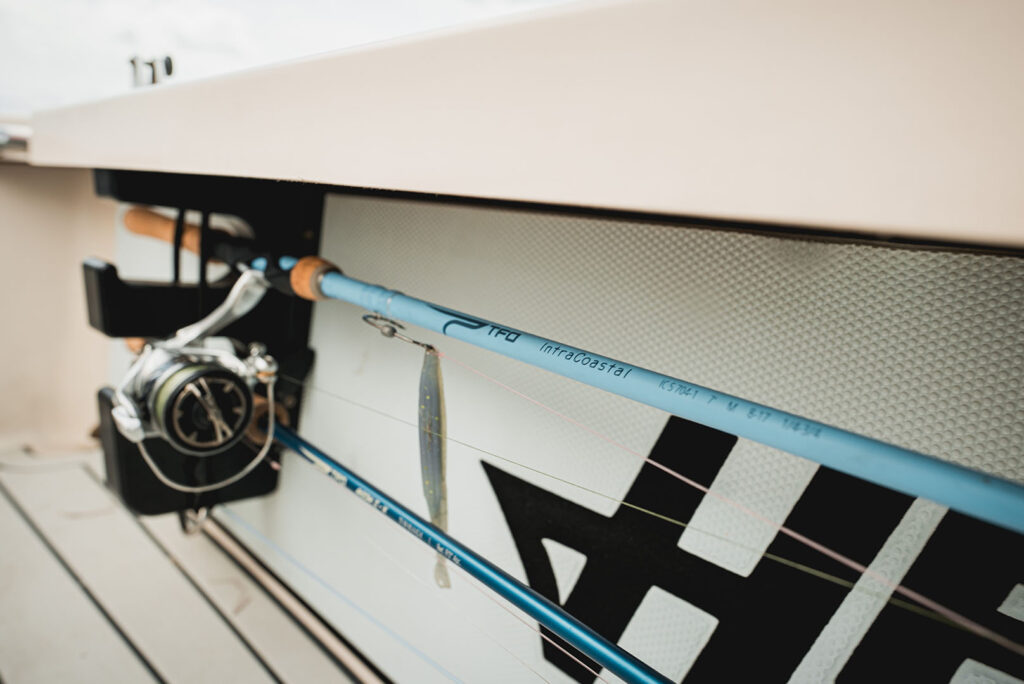Alaska is downright spoiled when it comes to fishing opportunities. Endless locations, endless seasons (if you count ice fishing), and a wide range of species to choose from. Ocean, lakes, creeks, rivers, we’ve got it all!
As a born and raised Alaskan Native, I find joy from every bit of it. But for me, the one target that stands out from them all, is the arctic grayling.

Photo: Kory Robbins
Otherwise known as the sailfish of the north, grayling are absolutely stunning creatures with an array of vibrant yet translucent colors of blue, red, and silver displayed on their large and prominent dorsal fin.
In Alaska, we have arctic grayling, as opposed to the nearly identical grayling found in Europe and parts of Russia. On average, grayling are a rather small species of fish. Believe it or not, they are actually part of the family of salmon species, Salmoniformes.
Fishing in Alaska is almost like fishing in a whole different world. I often catch myself forgetting that our fishing style is much, much different up here than in the states, almost entirely due to our salmon runs. In Alaska, we use flies that imitate salmon flesh and eggs, all varying colors depending on the lifecycle of the salmon.
However, the thing that skews our very specific style of fly fishing, are our grayling. Sure, every now and then they will eat up a flesh fly or painted bead, but only if its swung in the right spot at the right time. It’s not a very consistent way of fishing for grayling, in my experience. What is consistent with grayling, however, is the type of water they are typically found in most often.

Photo: Tessa Shetter
Alaska, and many of you know, is huge. I’ve lived here my whole live and have only made it as far as Homer and Cantwell, which equidistance from Anchorage is about 300 miles each. Looking at that on a map, not a lot of ground covered. But, even within my “little” area of expertise, I’ve found where the grayling like to hang.
To put it simple, grayling like to be “up”. This means that the further “up” north you are, the more grayling there will be. The further “up” stream you are, the more grayling. If you’re in the southern part of the state, or the peninsula, the higher “up” in elevation is where you’ll find the grayling.
And within the “up”, the grayling will be peacefully laying in a slow, deep pool of clear water, just waiting for one of the bajillion mosquitoes in Alaska to land on the surface, or for a subsurface insect to chase at its level.
So, now that we’ve covered where to find grayling, let’s talk the nitty gritty of how to actually catch one.

TFO Ambassador Kory Robbins with an Alaskan grayling. Photo: Tessa Shetter
A grayling that is considered large is around 18”, giant if it reaches 20”. The largest recorded arctic grayling is 30”, which is big big.
In the areas I fish, the grayling LOVE dry flies, and I LOVE watching them hit top water. Timing is key, since grayling have the tiniest mouths you’ll ever see in a fish and more often than not, will completely miss your fly on its first surface. So, if you miss him the first time, don’t give up. Trust me, he will be back almost instantly.

Photo: Tessa Shetter
Like I said before, Alaska is home to what seems like all the mosquitoes in the world. So, anything that even slightly resembles a small insect usually works for top water fishing. There are some areas that are so remote and untouched, it’s said that a gum wrapper will fool a grayling. My favorites include the elk hair caddis, stimulator, and if I’m feeling wild, a chubby Chernobyl. And with their small mouths, I’m usually using anywhere from a size 8-14 fly.

Grayling on the Purple Chubby Chernobyl. Photo: Kory Robbins
For subsurface, a nymph, bead, and occasionally a flesh fly or leech will get their attention. Spring and fall is when you’ll have the most action with subsurface flies. This is due to the ice melting in spring runoff and releasing old salmon flesh (try a cotton candy/ham & eggs fly), and the releasing of fresh salmon flesh and eggs from the fall spawns.
Summer months are peak grayling fishing, right before and right after the salmon spawns. There are moments when the salmon push grayling out of their normal areas, and the most common tactic for that is to try a painted bead behind the salmon where the grayling are most likely waiting for eggs.
Gear-wise, you won’t need a lot. With the size and appetite of graylings, anywhere from a 3wt to a 6wt set-up is all you will need. There is the common case of catching a grayling while targeting salmon or trout, and in those situations, whatever rod you are using will work perfectly fine.

The LK Legacy & BVK-SD reel. Photo: Kory Robbins

Grayling on the Mangrove. Photo: Tessa Shetter
I would recommend the TFO Blue Ribbon when using small patterns and dry flies, and the LK Legacy single and two-handed rods when fishing subsurface for grayling to give the best presentation. The Mangrove is also an excellent choice.
From my experience, grayling don’t put up too much of a fight. In fact, when I’m not using a dry fly, I can usually sense when it’s a grayling on the end of my line by the fact that it feels like I’m reeling in a wet rag with an occasional head twitch. Totally different story when you’re using a 3wt with a dry fly, though!
The best part comes when the grayling is netted, and you can feast your eyes on that big ol’ fin. Nothing compares to the colors, shape, and overall beauty of the graylings dorsal.
Well folks, that about covers it. I hope my knowledge from experience is helpful in the journeys of seeking out grayling. Though the patterns I see and the techniques I use could be different from others, my goal is to share the knowledge I have personally gained. There’s always something new to be learned in fishing every day!

Photo: Tessa Shetter
Blog written by TFO Alaskan Ambassador Tessa Shetter. Photos provided by Tessa and TFO Alaskan Ambassador Kory Robbins.
![]()






